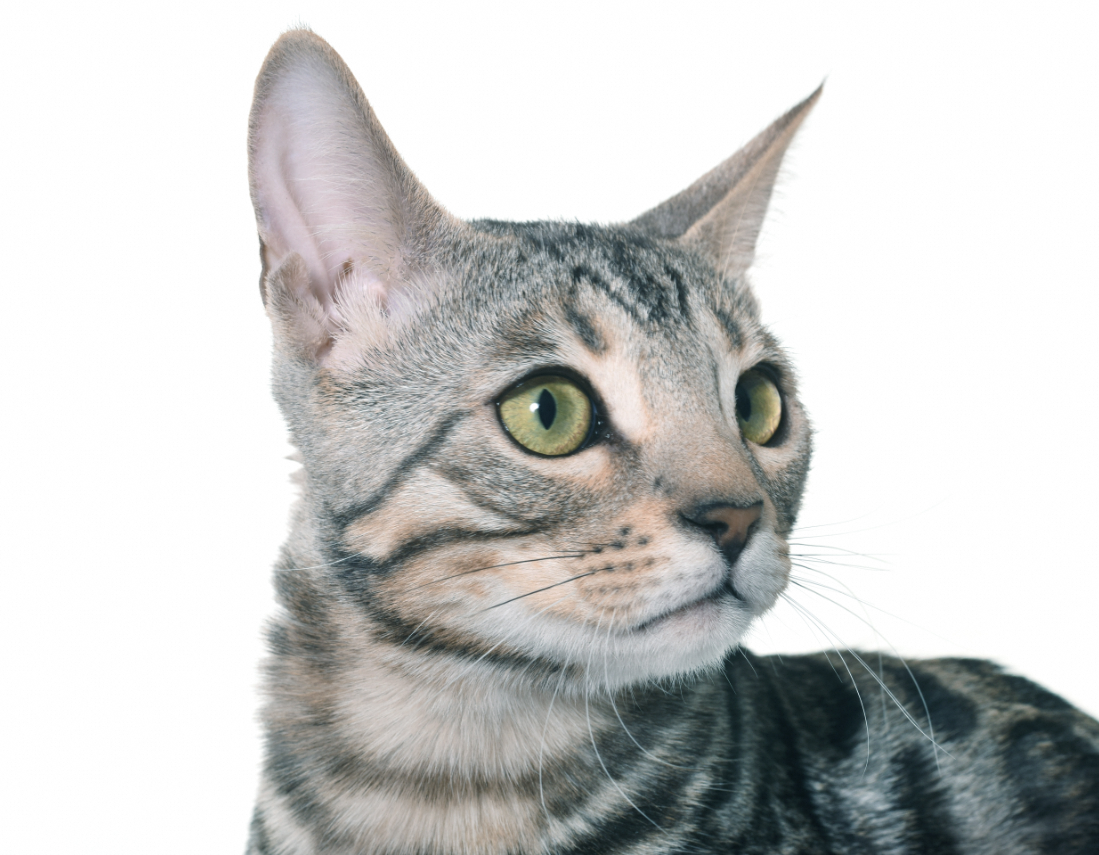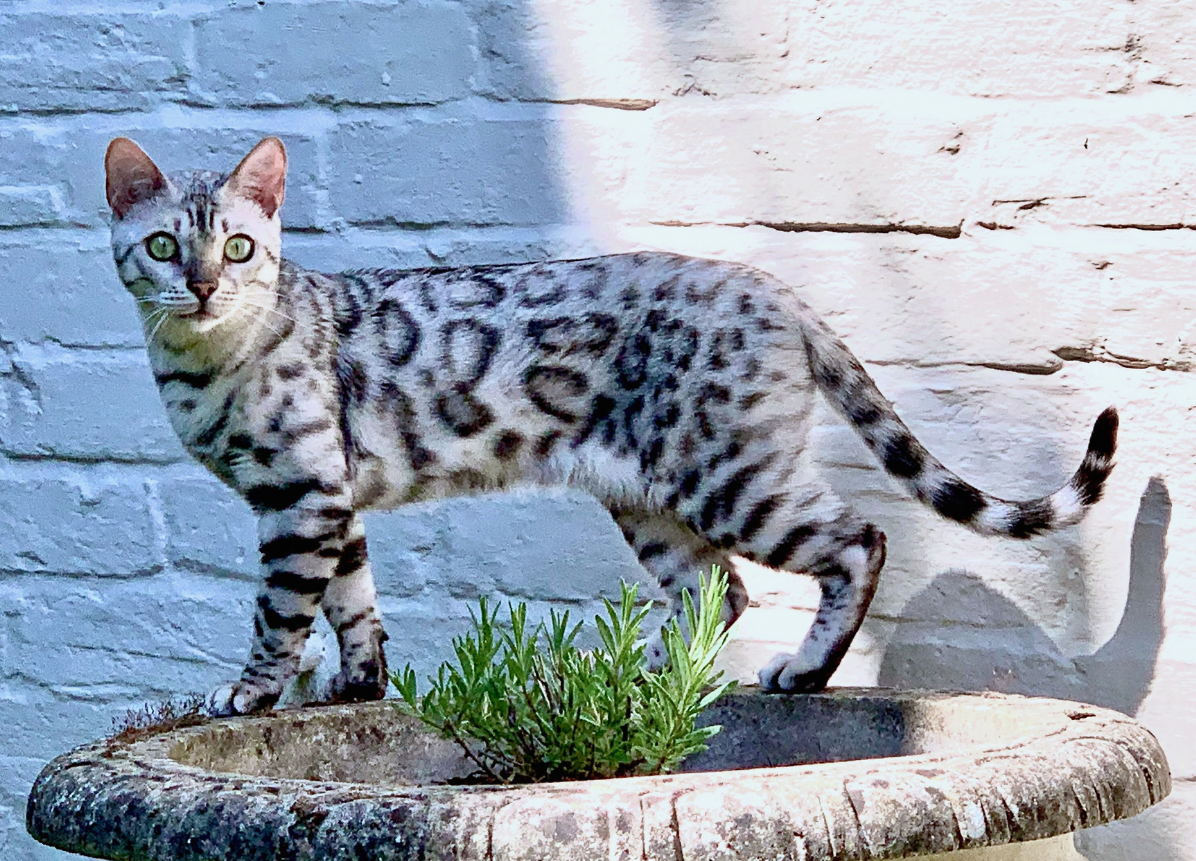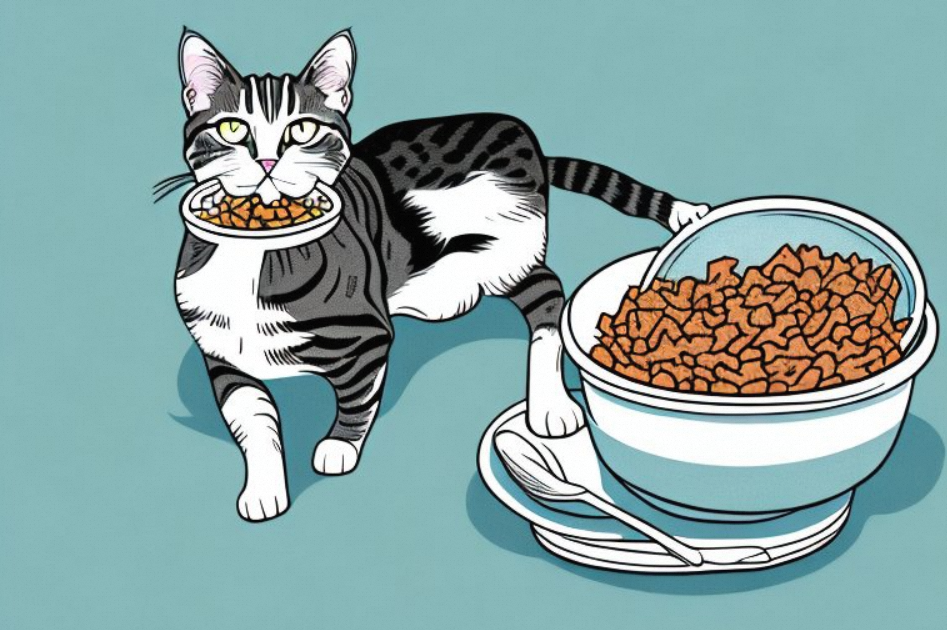With their stunning appearance and dynamic personalities, silver Bengal cats have captured the hearts of feline enthusiasts worldwide. This exotic breed, known for its striking silver coat patterned with black or grey spots and rosettes, descends from the regal Asian leopard cats and domestic tabbies. Not only are they a visual feast for the eyes, but they also bring zest and charisma into their owners’ lives. In this article, we delve into what makes the Silver Bengal a coveted companion and provide practical tips for potential owners on care, behavior, and health management.
In This Article
History and Origin of the Silver Bengal Breed
The history and origin of the Silver Bengal cat, while rooted in the broader development of the Bengal breed, has its own unique tale. The Bengal breed itself began as a cross between the domestic cat and the Asian leopard cat (Prionailurus bengalensis) in the United States in the 1960s and 1970s. This hybridization aimed to create a domesticated feline with the physical allure of the wild leopard cat but with a friendly disposition suited for household living.
The original Bengal cats boasted coats of various shades, often reflecting the golden hues of their wild ancestors. It wasn’t until the late 1990s when Gene Johnson of Gogees Bengals and Bob Dundon of Nola Bengals noticed the unique appeal of a paler, silver-toned coat. Their breeding programs intentionally pursued this striking coloration, which lacked the traditional golden background. They aimed to generate Bengals with a base coat ranging from pure silver to a gunmetal gray.
Selective breeding over time perfected this color variant, incorporating it into the pedigree Bengal lineage. The International Cat Association (TICA) recognized the silver color as an official variation of the Bengal cat breed in 2004, following efforts to stabilize the trait and prove its unique beauty and appeal.
The Silver Bengal cat showcases the same vivid patterns as other Bengals but set against a contrasting silver-white or gray background, making their spots, rosettes, or marbling even more pronounced. The icy coolness of their fur resembles the elusive beauty of a winter forest, as if dusted with frost.
Physical Features of the Silver Bengal Cat
The Silver Bengal cat is a stunning testament to the breed’s wild ancestry, exhibiting physical features that are both captivating and impressive. The hallmark of these felines is their luxurious, shimmering silver coat that serves as a backdrop to the darker-colored markings, be it spots, rosettes, stripes, or a combination thereof. These contrasting patterns can range from bold, solid black to softer shades of grey, often giving the appearance that the cat has been sprinkled with moonlit dew.
- Their coats are not just admired for color but also for texture; Silver Bengals have a soft, plush pelt that is often described as pelt-like or satin-like to the touch. This is a nod to their wild roots and provides an additional allure to the overall sensory experience of interacting with these cats.
- Aside from their distinctive coat, Silver Bengals share the same robust build as other Bengals. They are medium to large cats with substantial musculature, displaying power and agility. They have long, muscular bodies with sturdy bone structure, yet they exhibit a certain graceful elegance that belies their strength. The hind legs of the Silver Bengal are slightly longer than the front legs, giving them a characteristic stalking gait reminiscent of their wild ancestors.
- Their heads are broad and wedge-shaped with small rounded ears and pronounced whisker pads. The eyes are one of their most captivating features—usually large, round, and highly expressive, set beneath a slightly domed forehead, and can come in a variety of colors that include gold, green, or even blue, depending on the specific lineage.
- The tail is thick, medium in length, and often ends with a darker tip. It serves as a perfect complement to their dramatic physique, aiding in balance and echoing their active nature.
The Temperament of the Silver Bengal
The temperament of the Silver Bengal cat is as striking as its physical appearance, embodying a delightful fusion of energy, intelligence, and affection. These cats are known for their active and playful nature, combined with a warm and sociable disposition. They bring a jungle flair into the home, with a predilection for adventure that makes them fascinating companions.
- Silver Bengals are incredibly curious creatures that love to explore their surroundings. Their high level of intelligence means that they are quick learners and can often be taught tricks, such as fetch or walking on a leash, which is not typical for many cat breeds. They have a penchant for climbing to high vantage points, so tall cat trees and perches are ideal to satisfy this instinctual behavior.
- Despite their energetic and independent streaks, Silver Bengals are also known for forming strong bonds with their human companions. They are remarkably interactive and enjoy being involved in whatever activities are happening around them, often following their owners from room to room. Their sociable nature means they often thrive in a household where they can receive attention and engagement.
- However, their need for mental stimulation and activity should not be underestimated. Silver Bengals can become mischievous or even destructive if bored, so interactive playtime and toys that challenge their mind and body are essential. Puzzle feeders, teaser toys, and anything that triggers their hunting instincts can help keep them occupied and fulfilled.
- Regarding vocalization, Silver Bengals can be quite chatty. They have a unique voice and are known to use it to communicate their needs and desires to their human family. Whether it’s a friendly meow greeting, a chirp, or a full-scale conversation, Bengals enjoy ‘talking’ with their owners.
Health and Genetics of Silver Bengal Cats
The realm of health and genetics in Silver Bengals, much like any other pedigreed cat, requires careful attention from both breeders and owners to ensure the longevity and well-being of these magnificent felines. Though known for their robustness and vitality, there are certain genetic predispositions and health concerns to which the Bengal breed can be prone.
Genetic health issues common within Bengals may include Hypertrophic Cardiomyopathy (HCM), Progressive Retinal Atrophy (PRA), and Pyruvate Kinase Deficiency (PKD). Hypertrophic Cardiomyopathy is a form of heart disease characterized by an abnormal thickening of the heart muscle, leading to potential cardiac problems. Progressive Retinal Atrophy involves the deterioration of the retina, which can lead to eventual blindness. Pyruvate Kinase Deficiency is an inherited hemolytic anemia caused by defects in the enzyme pyruvate kinase.
Aside from genetic concerns, Silver Bengal cats are susceptible to common feline ailments, such as dental disease and obesity. To maintain optimal health, a proactive approach to dental hygiene through regular brushing or dental treats can aid in preventing periodontal disease. Regarding diet, providing measured meals rather than free feeding, along with ensuring the cat gets ample exercise, will help in managing weight and preventing obesity.
The unique coat of the Silver Bengal doesn’t usually have more demanding care requirements than other Bengals, but it’s important for owners to understand that occasional grooming helps keep their coat shiny and reduces the chance of skin issues. Weekly brushing can collect loose hair and dander, and although Bengals are renowned self-groomers, they may require assistance, especially during shedding seasons.
Diet and Nutrition Tips

Are Silver Bengal Cats Hypoallergenic?
The notion that Silver Bengal cats, or any cat for that matter, are entirely hypoallergenic is a common myth. No cat is completely hypoallergenic, including the Silver Bengal. However, Bengals are often mistakenly believed to be less likely to cause allergic reactions due to their fine, short coat that tends to shed less than many other breeds.
Allergies to cats are typically triggered by proteins found in the cat’s saliva, urine, and dander (dead skin cells). When a cat grooms itself, the saliva dries on the fur and, as the cat sheds, these allergens are dispersed into the environment. Given that Silver Bengals may shed less, they could potentially spread fewer allergens around a home than a breed with a denser or longer coat.
If you’re looking to minimize the risk of allergies, there are steps you can take such as more frequent grooming to reduce the amount of fur and dander, using air purifiers with HEPA filters, and keeping the cat out of bedrooms and other areas where you spend a lot of time. Regular cleaning of the home, including vacuuming with HEPA filters and washing textiles the cat comes into contact with, can also help reduce allergens.
While Silver Bengals, or any Bengals, are not hypoallergenic, they may be a suitable option for those with mild allergies, especially if combined with careful household allergen management. Always consult with an allergist if cat allergies are a concern in your household.
